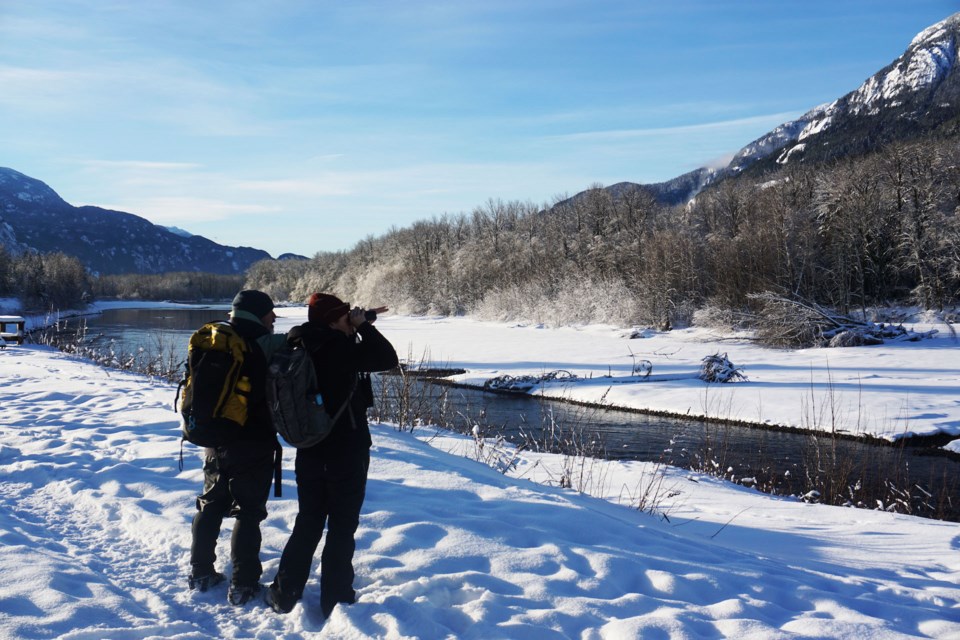The took flight early Sunday morning with volunteers counting a total of 799 eagles across Squamish.
Typically taking place the first Sunday of the new year, the event was delayed due to adverse weather conditions. As a result, the count was postponed until Jan. 9, when about 54 volunteers promptly dispersed from the Brackendale Art Gallery at 9 a.m.
Despite Squamish being blanketed in snow and ice, the total tally was on par with past years, much to the surprise of Christopher Di Corrado, one of the co-ordinators for the count.
“I really expected it to be kind of a really quite poor year,” he said. “But… a lot of areas have around the same similar numbers of birds as previous years.
For comparison, 2021 had about 848 eagles and 2020 had about 747. In 2019, there was a total of 1,157. The highest count ever was in 1994 with 3,769. All .
Di Corrado also added that volunteers seemed to be happy with how the weather turned out.
“Normally, you know, we’re out there in the rain…. But everyone who’s coming in is completely happy with how beautiful it was today and just really stunning scenery and beautiful walks in the sun.”
One notable change that took place this year is the number of eagles spotted at the landfill. Di Corrado said that the volunteers counted 396 this year compared to 208 from 2021.
Some of that may be because eagles are scavengers and will try to find food in the easiest way possible, usually through salmon carcasses, explained Katelyn West, a volunteer on the count and an eagle watch co-ordinator for the .
“When all these salmon come up, what they do is they go up there tributaries where they were hatched and raised, and they lay their own eggs, and then they’re going to pass away. And then what happens to their carcasses are just kind of laying there, and they get distributed into the ecosystem via other animals, including the eagles. So eagles, to conserve energy, they’re just going to pick away and all those dead carcasses, which offer like plenty of nutrients on their own,” she said.
But, West said the increased rain and water levels from the atmospheric river events in the fall may have washed away the salmon carcasses that the eagles typically feed on.
“When the water comes up with all that rain, it washes all of that down back into the ocean, so they’re not going to be able to pick away,” she said. “So they went up to the top of the tributaries where the salmon already made it, and they were kind of stuck in logs in areas in there. Or, they just went further south to find more food.”
“They’re just kind of moving around to find food.”
Di Corrado also said that frozen water channels in the Squamish Valley could also contribute to the high numbers at the landfill
Additionally, a unique barrier this year was how to reach the upper Squamish Valley as the road was only plowed to the 小蓝视频 Hydro station. Di Corrado said they were fortunate to have new help from Squamish’s No Limit Motorsports, which donated a snowmobile and trailer to help get a team back there for the count.
Di Corrado said the count also had help from the Brackendale Art Gallery, Squamish Rafting Company, numerous private property owners, and the Squamish First Nation, which welcomed volunteers on their land to get an accurate count.
Overall, Di Corrado said the community was really committed this year.
“I think this was a really fun count and some hard work out there. And, you know, people go out every year, and they go through this pouring rain and, this year, they went dashing through the snow, which is really awesome,” said Di Corrado. “People are pretty dedicated, so it’s great.”
For more information about past or future Brackendale Winter Eagle Counts, visit .




